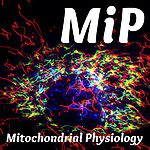Scott 2013 Abstract MiP2013
| Scott GR, Mahalingam S, McClelland GB(2013) Mitochondrial adaptations to hypoxia in high-altitude birds and mammals. Mitochondr Physiol Network 18.08. |
Link:
MiP2013, Book of Abstracts Open Access
Scott GR, Mahalingam S, McClelland GB (2013)
Event: MiPNet18.08_MiP2013
The hypoxic and cold environment at high altitudes requires endothermic animals to sustain high rates of O2 consumption for both locomotion and thermogenesis while facing a diminished O2 supply. We are examining the mitochondrial mechanisms of genotypic adaptation and phenotypic plasticity that help maintain ATP supply during hypoxia in high-altitude birds and mammals. Respiratory capacity, cytochrome oxidase activity, phosphorylation efficiency, oxygen kinetics, and several other variables were measured in mitochondria isolated from the flight muscle of bar-headed geese and the hindlimb muscle of highland deer mice, and each were compared to closely-related lowland taxa. Our results suggest that several mitochondrial adaptations, coupled with enhanced mitochondrial O2 supply, contribute to performance in hypoxia.
• O2k-Network Lab: CA Hamilton Scott GR
Labels: MiParea: Respiration, Comparative MiP;environmental MiP, Exercise physiology;nutrition;life style
Organism: Other mammals, Birds
Tissue;cell: Skeletal muscle
Preparation: Isolated mitochondria, Enzyme
Regulation: Oxygen kinetics Coupling state: LEAK, OXPHOS
HRR: Oxygraph-2k
MiP2013
Affiliations and support
Department of Biology, McMaster University, Hamilton, Ontario, Canada
Email: scottg2@mcmaster.ca
Supported by NSERC of Canada.
